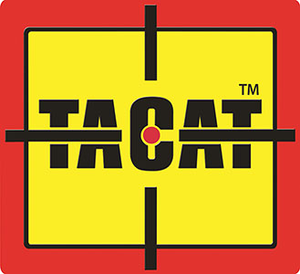Defendants in $1.6 million Navy mystery suppressor case found guilty
A former Navy employee and the owner of a machine shop were found guilty on charges involving the illegal manufacture of 349 homemade suppressors for a shadowy intelligence group.
The two were on trial for their roles in the making and selling of the silencers, which cost just $8,000 to produce, to the U.S. military for grossly inflated prices, which led to charges of conspiracy and theft of government money.
Lee M. Hall, a civilian employee with the Navy, and Mark S. Landersman, owner of a hot rod shop, were found guilty of producing the suppressors without a license and shipping them across state lines in violation of the National Firearms Act, the Washington Post reported.
Hall was a Department of the Navy civilian attached to the Directorate for Plans, Policy, Oversight, and Integration.
Landersman, who owned a custom car shop in Temecula, California, and does not have the required federal licenses to manufacture Title II items, claims the suppressors were intended to be mounted on a cache of AK-series rifles seized overseas and warehoused in Pennsylvania that have since been destroyed. His brother, who was at the time a senior official in the obscure Navy office that ordered the suppressors, is believed to have turned him on to the no-bid contract.
The $1.6 million involved had been allocated to fund intelligence studies by the mostly administrative department, not weapon procurement.
According to court documents, Navy investigators found that the $5,422.21 per unit cost of the suppressors made by Landersman to be excessive, stating that suppressors from Surefire, already on the General Services Administration schedule and properly licensed, ran between $900 to $1,300.
Assistant U.S. Attorney Patricia Haynes argued that the defendants’ testimony regarding undisclosed black ops and secret commando units was “nothing more than a fantasy” to hide a simple case of fraud.
The decision maker in the case, U.S. District Judge Leonie M. Brinkema, a 1993 appointment to the bench by President Bill Clinton, also didn’t buy the defendants arguments that the suppressors, which when tested were found to be of only limited use, were ordered for secret clandestine operations and therefore had to be purchased off the books.
“I do not accept the argument that because this might have been covert, that somehow that excuses the participants from playing by the rules,” Brinkema said.
Indeed, in the past the DoD and the Central Intelligence Agency regularly have contracted with established firearms manufacturers to produce so-called “sterile” firearms and other items for use by spies or special units and in covert operations.
As far back as World War II, Hi Standard made an “off the books” run of suppressed .22 caliber HD pistols for the Office of Strategic Services, forerunner of the CIA. In the 1960s and 70s shadowy firearms designers such as Paris Theodore and Philip Lichtman produced guns for government agencies undisclosed — while still having the proper licenses.
Even such large and established players as Smith & Wesson have quietly produced firearms for the country’s commando units over the years.
Currently the Bureau of Alcohol, Tobacco, Firearms and Explosives lists more than 3,000 Federal Firearms License holders with Special Occupation Tax classifications that allow them to make legal Title II weapons and accessories such as suppressors. Many of these regularly supply military and government units in contracts both large and small. In fact, the 1986 Hughes Amendment, which banned civilian sales of new made machineguns, specifically exempted military, police and law enforcement users. This fact has industry groups confused over what was really going on with the secret contract.
“It is difficult to think of a reason why the U.S. Navy wouldn’t have simply ordered and purchased sound suppressors from established manufacturers,” Larry Keane, National Shooting Sports Foundation senior vice president and general counsel told Guns.com Friday. “The U.S. military, including Special Forces, has attended the SHOT Show every year to look for new and innovative product offerings from legitimate manufacturers and exhibitors.”
Counsel for Landersman told reporters he was disappointed by the verdict in the case while both men are out on bond pending their sentencing hearing in January 2015.
The post Defendants in $1.6 million Navy mystery suppressor case found guilty appeared first on Guns.com.
